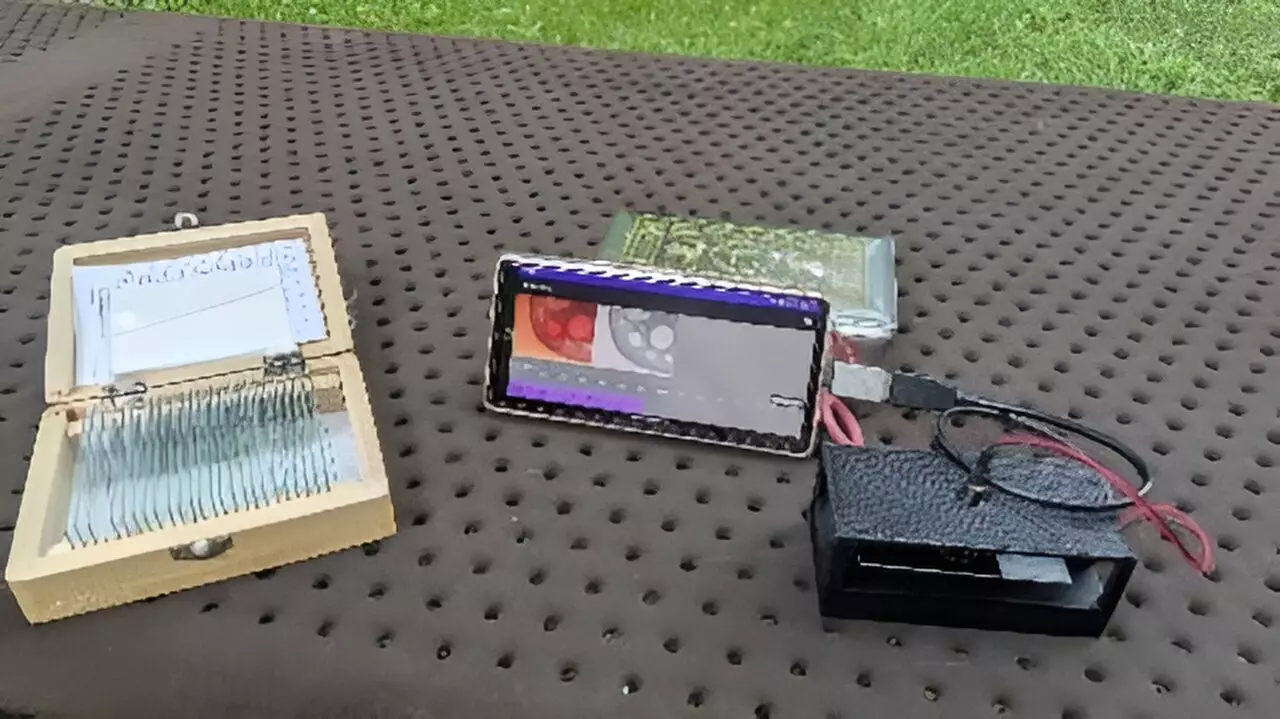In a world where accessibility and portability are paramount, the advent of a smartphone-based digital holographic microscope marks a transformative moment in the realm of visual diagnostics and scientific exploration. This innovative system, developed by researchers at the Tokyo University of Agriculture and Technology, seamlessly combines groundbreaking scientific technique with the ever-present technology of smartphones. At its core, this advancement has the potential to democratize access to precision 3D measurements, particularly in under-resourced educational and medical settings. By harnessing the power of our ubiquitous mobile devices, the researchers have crafted a tool with the promise to revolutionize how we view and interact with microscopic worlds.
Understanding Holographic Microscopy
The utilization of holography in microscopy is a fascinating concept that involves capturing the interference patterns caused by light. These patterns, formed from a reference beam and the light scattered off a sample, provide an astonishing depth of detail that traditional microscopes struggle to achieve. The challenge with existing holographic microscopes has been their reliance on intricate optical systems typically linked to a personal computer for processing. This complexity hinders their portability and limits their utility in the field, particularly in environments where access to sophisticated lab infrastructure is lacking.
Yet, with ingenuity and practical thinking, the team, led by Yuki Nagahama, sought to dismantle these barriers. They created a prototype that utilizes a simplified optical design, enhanced by a lightweight housing produced through 3D printing. By consolidating the processes into a smartphone application, they produced an affordable alternative that could transform diagnostic practices globally. This system not only supports educational endeavors, but its utility extends to critical healthcare scenarios, such as diagnosing conditions like sickle cell anemia in less-developed regions where conventional resources may be scarce.
Real-Time Reconstruction and User Interaction
The implications of this invention are profound, especially given its capability for near-real-time hologram reconstruction. Users can engage with the visual data dynamically, with intuitive pinch gestures available on smartphones to explore details within the holograms. This interactive feature marks a significant leap forward, as it mimics the natural tendencies of users to engage with touch screens, thus enhancing their experience and understanding of the biological studies at hand. From a pedagogical perspective, this could invigorate classroom environments, allowing students to visualize living specimens firsthand in ways previously reserved only for advanced laboratories.
Furthermore, the innovative computational technique of band-limited double-step Fresnel diffraction plays a crucial role. This approach reduces the amount of data required for processing, paving the way for rapid reconstruction of images—up to a staggering 1.92 frames per second, rendering the experience nearly immediate for the observer. This efficiency is essential not just for scientific observation, but for practical medical diagnostics where time is often a critical factor.
The Path Forward: Integration of Deep Learning
As the researchers continue to refine their technology, they are exploring the integration of deep learning methods to enhance image quality further. This will address current challenges faced in holographic reconstruction, such as the emergence of unwanted secondary images which can cause confusion for users. By employing artificial intelligence to improve the clarity and utility of these reconstructions, the microscope can evolve into an even more powerful diagnostic tool.
The innovation isn’t just technical; it underscores a broader vision of merging technology with humanitarian goals. By making sophisticated diagnostics available in everyday devices, there is a tangible path to improving health outcomes in regions where conventional medical facilities are simply absent. It stands as a reminder that the intersection of technology and societal needs can yield actionable solutions.
Broader Applications and Future Implications
While the immediate applications in medical diagnostics and education are breathtaking, the potential uses for this smartphone-based digital holographic microscope extend even further. Research fields across biology, material science, and environmental studies could greatly benefit from its portability and affordability. Field researchers, who often face challenging conditions, could use this microscope to gather vital data on living organisms and environmental samples without the burden of transporting heavy equipment.
As we move forward, we may find ourselves at the threshold of a new era in microscopy. The innovative strides championed by Nagahama and his team may well represent just the beginning of a paradigm shift—one where the tools of scientific inquiry are accessible to all, regardless of location or resources. With technology continually evolving, the years ahead promise exciting intersections where human ingenuity meets the possibilities of advanced digital solutions, forever altering our capacity for exploration and understanding of the microcosm around us.


Leave a Reply